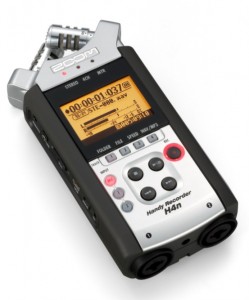 “The details are not the details. They make the design.”
“The details are not the details. They make the design.”
–Charles Eames, designer
For musicians and designers alike, our approach to detail largely determines whether our work soars or flops.
Compare, for instance, these two performers:
Musician 1 performs with passion along with polished rhythm, tone, and intonation.
Musician 2 is no less fervent, but lets her timing drift and her tuning falter.
Who would you rather listen to?
Thoroughness Breeds Excellence
Simply put, meticulous work outfits us with the command we need to make inspiring music.
Even so, I’ve noticed that many music students aren’t consistently detail-oriented in their practice; they’ll often run through one composition after another without zeroing in on excerpts or attending to nuances.
What’s going on? Basically, such students either deem detailed work boring or they don’t know how to work on details.
We veterans, on the other hand, savor delving into the minutiae of phrases – we possess strategies to tailor every fine point, and we enjoy doing so.
Fortunately, students can acquire the thorough practice habits of professionals, but most need guidance.
Here, then, are 6 ways that musicians can permeate their practice with precision and fascination.
“Students can acquire the thorough practice habits of professionals, but most need guidance.”
Six Ways to Enjoy Detailed Music Practice
1. Bring meaning to every gesture
Regardless of whether we’re working on a humble scale or a beloved masterpiece, we should shoot sparks of imagination through every sound we make.
2. Isolate problem spots in context
When we tackle troublesome passages, we should sense the dramatic framework from which they’re extracted. If a string player practices a left-hand shift, let’s say, she should still express the emotional energy of the larger phrase.
3. Take pleasure in excellence
In The Musician’s Way, I highlight seven Habits of Excellence: ease, expressiveness, accuracy, rhythmic vitality, beautiful tone, focused attention, and positive attitude. To embody those qualities, it’s essential that we choose manageable music and then take pleasure in attaining high standards.
“For musicians and designers alike, our approach to detail largely determines whether our work soars or flops.”
4. Listen deeply
As we play or sing, we have to listen intently and compare what we hear to what we want (self-recording helps, too). We also have to be open to whatever transpires, treating errors with curiosity as opposed to disappointment.
Recommended Recorders: Audio: Zoom H4n; Video & Audio: Zoom Q4n
5. Seek variety
To keep our work fresh, we should continually search out ways to enliven our sound, toying with articulation and accent, tinting our tone, and so on.
6. Shift perspectives
To help generate allure in our sound, it helps to vary our perspective in practice. For instance, as we refine a phrase, we might give more attention to easefulness for a minute and then explore possibilities for adding crispness to our rhythm.
On top of that, we do well to ask fellow musicians to listen to us and share their thoughts because no matter how advanced we become, there are always new artistic insights for us to discover.
See Part I of The Musician’s Way for diverse strategies that infuse artistry into deliberate practice.
Related posts
Awareness, focus, concentration
The benefits of accessible music
Self-evaluation: The key to artful practice
Solving problems in practice
The ultimate practice shortcut
© 2010 Gerald Klickstein
Image licensed from Shutterstock



I agree with the article and I love detailed practice. What I would say is that getting to that point is something that takes time and passion for music. Naturally someone who takes music seriously and has an ear ‘ends up’ refining the details to make the song sound profoundly excellent.
I think that if you start of young musicians with this mindset you can end up with some frustrated musicians. Initially music should be taught as something to ‘get out there’ and enthuse young musicians.
If you are 5 years into practising and still skimming pieces, well this is different 🙂